#onion garlic
Explore tagged Tumblr posts
Text
Main Dishes Recipe

This healthy stuffed peppers recipe uses brown rice, lean ground beef, and fresh bell peppers to make a nutritious meal that's colorful and flavorful.
0 notes
Text

Chinese beef and onion stir fry
#beef#stir fry#chinese food#asian food#food#dinner#meal#main course#garlic#onion#soy sauce#meat#chinese takeout#tasty#foodporn#delicious#cooking#food photography#foodgasm#recipes
1K notes
·
View notes
Text
Healthier Stuffed Peppers Recipe

Brown rice, lean ground beef, and fresh bell peppers are combined in this nutritious stuffed peppers recipe to create a dish that is both colorful and flavorful.
1 note
·
View note
Photo
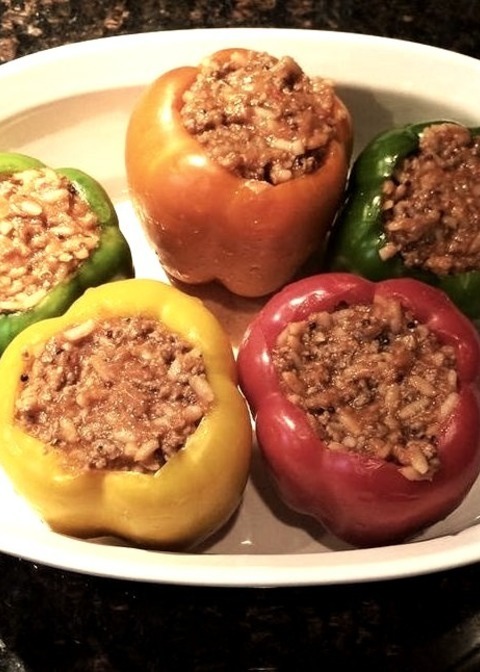
Healthier Stuffed Peppers This healthy stuffed peppers recipe uses brown rice, lean ground beef, and fresh bell peppers to make a nutritious meal that's colorful and flavorful.
0 notes
Text
"kuna please slash these for me" you hold out some onions and garlic in front of him with your best smile.
the man only grumbles "my cursed technique isn't to cut through your measly vegetables brat."
your shoulders slump in defeat and a soft pout forms on your lips. upon seeing it, sukuna almost goes back on his word. it's not that hard to slice and dice some veggies after all, right? true but he wouldn't be the king of curses without some kind of leverage first.
"you know i hate cutting these up" you mumble underneath your breath and sukuna internally melts but he's not about to give in just yet.
"do not ask me to do such worthless tasks with a technique capable of killing the world if i deem fit." he looms at you, amused to see your reaction.
"your domain is literally a kitchen though..."
"what?"
you giggle and run for your life, ironically, towards the kitchen but it's all futile because even before you could actually step into the room, you're wrapped, no trapped in his arms.
"what did you say, brat?" he stares down at you with narrowed eyes but you don't miss the faint smile that graces his features.
"i said, please cut up the veggies for me my lord" and that was the killing point, sukuna folds. he rolls his eyes and huffs in faux annoyance only earning a giggle from you.
he lets you go, albeit reluctantly and asks where the hell those onion and garlic are. you skip happily to bring them to him.
"that shit i do for you..." sukuna stares at you as a swift invisible slash mince the vegetables to perfection. he thinks your wide eyed gaze marvelling at the sight is worth so much more than the prestige of his own cursed technique.

#super funny backstory actually#i was cooking#literally#in the kitchen and i was dreaded to chop the onions and mince the garlic#they're such a small thing to do but so irritating#and then sukuna invaded my mind#and i was like imagine cutting these bad boys with his cleave lmao#hence the birth of this drabble#supersweet! writes#jujutsu kaisen#jjk x reader#jujutsu kaisen x reader#jjk scenarios#jjk drabbles#jjk fluff#jjk crack#sukuna imagine#sukuna x y/n#sukuna x reader#sukuna x you#ryomen sukuna#ryomen x reader#sukuna fluff#ryomen sukuna x reader
246 notes
·
View notes
Text

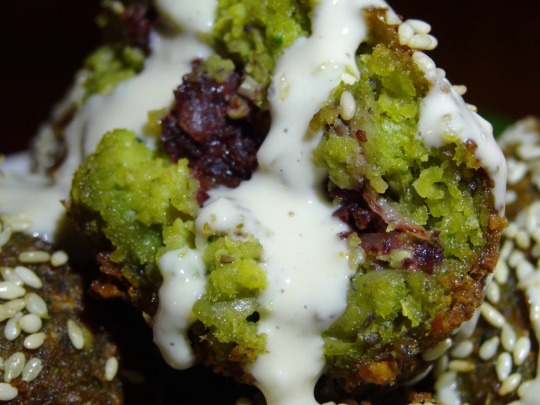
[ID: First image shows large falafel balls, one pulled apart to show that it is bright green and red on the inside, on a plate alongside green chilis, parsley, and pickled turnips. Second image is an extreme close-up of the inside of a halved falafel ball drizzled with tahina sauce. End ID]
فلافل محشي فلسطيني / Falafel muhashshi falastini (Palestinian stuffed falafel)
Falafel (فَلَافِل) is of contested origin. Various hypotheses hold that it was invented in Egypt any time between the era of the Pharoahs and the late nineteenth century (when the first written references to it appear). In Egypt, it is known as طَعْمِيَّة (ṭa'miyya)—the diminutive of طَعَام "piece of food"—and is made with fava beans. It was probably in Palestine that the dish first came to be made entirely with chickpeas.
The etymology of the word "falafel" is also contested. It is perhaps from the plural of an earlier Arabic word *filfal, from Aramaic 𐡐𐡋𐡐𐡉𐡋 "pilpāl," "small round thing, peppercorn"; or from "مفلفل" "mfelfel," a word meaning "peppered," from "فلفل" "pepper" + participle prefix مُ "mu."
This recipe is for deep-fried chickpea falafel with an onion and sumac حَشْوَة (ḥashua), or filling; falafel are also sometimes stuffed with labna. The spice-, aromatic-, and herb-heavy batter includes additions common to Palestinian recipes—such as dill seeds and green onions—and produces falafel balls with moist, tender interiors and crisp exteriors. The sumac-onion filling is tart and smooth, and the nutty, rich, and bright tahina-based sauce lightens the dish and provides a play of textures.
Falafel with a filling is falafel مُحَشّي (muḥashshi or maḥshshi), from حَشَّى (ḥashshā) "to stuff, to fill." While plain falafel may be eaten alongside sauces, vegetables, and pickles as a meal or a snack, or eaten in flatbread wraps or kmaj bread, stuffed falafel are usually made larger and eaten on their own, not in a wrap or sandwich.
Falafel has gone through varying processes of adoption, recognition, nationalization, claiming, and re-patriation in Zionist settlers' writing. A general arc may be traced from adoption during the Mandate years, to nationalization and claiming in the years following the Nakba until the end of the 20th century, and back to re-Arabization in the 21st. However, settlers disagree with each other about the value and qualities of the dish within any given period.
What is consistent is that falafel maintains a strategic ambiguity: particular qualities thought to belong to "Arabs" may be assigned, revoked, rearranged, and reassigned to it (and to other foodstuffs and cultural products) at will, in accordance with broader trends in politics, economics, and culture, or in service of the particular argument that a settler (or foreign Zionist) wishes to make.
Mandate Palestine, 1920s – early '30s: Secular and collective
While most scholars hold that claims of an ancient origin for falafel are unfounded, it was certainly being eaten in Palestine by the 1920s. Yael Raviv writes that Jewish settlers of the second and third "עליות" ("aliyot," waves of immigration; singular "עליה" "aliya") tended to adopt falafel, and other Palestinian foodstuffs, largely uncritically. They viewed Palestinian Arabs as holding vessels that had preserved Biblical culture unchanged, and that could therefore serve as models for a "new," agriculturally rooted, physically active, masculine Jewry that would leave behind the supposed errors of "old" European Jewishness, including its culinary traditions—though of course the Arab diet would need to be "corrected" and "civilized" before it was wholly suitable for this purpose.
Falafel was further endeared to these "חֲלוּצִים" ("halutzim," "pioneers") by its status as a street food. The undesirable "old" European Jewishness was associated with the insularity of the nuclear family and the bourgeois laziness of indoor living. The קִבּוּצים ("Kibbutzim," communal living centers), though they represented only a small minority of settlers, furnished a constrasting ideal of modern, earthy Jewishness: they left food production to non-resident professional cooks, eliding the role of the private, domestic kitchen. Falafel slotted in well with these ascetic ideals: like the archetypal Arabic bread and olive oil eaten by the Jewish farmer in his field, it was hardy, cheap, quick, portable, and unconnected to the indoor kitchen.
The author of a 1929 article in דאר היום ("Doar Hyom," "Today's Mail") shows unrestrained admiration for the "[]מזרחי" ("Oriental") food, writing of his purchase of falafel stuffed in a "פיתה" ("pita") that:
רק בני-ערב, ואחיהם — הי��ודים הספרדים — רק הם עלולים "להכנת מטעם מפולפל" שכזה, הנעים כל כך לחיך [...].
("Only the Arabs, and their brothers—the Sepherdi Jews—only they are likely to create a delicacy so 'peppered' [a play on the פ-ל-פ-ל (f-l-f-l) word root], one so pleasing to the palate".)
Falafel's strong association with "Arabs" (i.e., Palestinians), however, did blemish the foodstuff in the eyes of some as early as 1930. An article in the English-language Palestine Bulletin told the story of Kamel Ibn Hassan's trial for the murder of a British soldier, lingering on the "Arab" "hashish addicts," "women of the streets," and "concessionaires" who rounded out this lurid glimpse into the "underground life lived by a certain section of Arab Haifa"; it was in this context that Kamel's "'business' of falafel" (scare quotes original) was mentioned.
Mandate Palestine, late 1930s–40s: A popular Oriental dish
In 1933, only three licensed falafel vendors operated in Tel Aviv; but by December 1939, Lilian Cornfeld (columnist for the English-language Palestine Post) could lament that "filafel cakes" were "proclaiming their odoriferous presence from every street corner," no longer "restricted to the seashore and Oriental sections" of the city.
Settlers' attitudes to falafel at this time continued to range from appreciation to fascinated disgust to ambivalence, and references continued to focus on its cheapness and quickness. According to Cornfeld, though the "orgy of summertime eating" of which falafel was the "most popular" representative caused some dietary "damage" to children, and though the "rather messy and dubious looking" food was deep-fried, the chickpeas themselves were still of "great nutritional value": "However much we may object to frying, — if fry you must, this at least is the proper way of doing it."
Cornfeld's article, appearing 10 years after the 1929 reference to falafel in pita quoted above, further specifies how this dish was constructed:
There is first half a pita (Arab loaf), slit open and filled with five filafels, a few fried chips [i.e. French fries] and sometimes even a little salad. The whole is smeared over with Tehina, a local mayonnaise made with sesame oil (emphasis original).
The ethnicity of these early vendors is not explicitly mentioned in these accounts. The Zionist "תוצרת הארץ" "totzeret ha’aretz"; "produce of the land") campaign in the 1930s and 1940s recommended buying only Jewish produce and using only Jewish labor, but it did not achieve unilaterial success, so it is not assured that settlers would not be buying from Palestinian vendors. There were, however, also Mizrahi Jewish vendors in Tel Aviv at this time.
The WW2-era "צֶנַע" ("tzena"; "frugality") period of rationing meat, which was enforced by British mandatory authorities beginning in 1939 and persisting until 1959, may also have contributed to the popularity of falafel during this time—though urban settlers employed various strategies to maintain access to significant amounts of meat.
Israel and elsewhere, 1950s – early 60s: The dawn of de-Arabization
After the Nakba (the ethnic cleansing of broad swathes of Palestine in the creation of the modern state of "Israel"), the task of producing a national Israeli identity and culture tied to the land, and of asserting that Palestinians had no like sense of national identity, acquired new urgency. The claiming of falafel as "the national snack of Israel," the decoupling of the dish from any association with "Arabs" (in settlers' writing of any time period, this means "Palestinians"), and the insistence on associating it with "Israel" and with "Jews," mark this time period in Israeli and U.S.-ian newspaper articles, travelogues, and cookbooks.
During this period, falafel remained popular despite the "reintegrat[ion]" of the nuclear family into the "national project," and the attendant increase in cooking within the familial home. It was still admirably quick, efficient, hardy, and frequently eaten outside. When it was homemade, the dish could be used rhetorically to marry older ideas about embodying a "new" Jewishness and a return to the land through dietary habits, with the recent return to the home kitchen. In 1952, Rachel Yanait Ben-Zvi, the wife of the second President of Israel, wrote to a South African Zionist women's society:
I prefer Oriental dishes and am inclined towards vegetarianism and naturalism, since we are returning to our homeland, going back to our origin, to our climate, our landscape and it is only natural that we liberate ourselves from many of the habits we acquired in the course of our wanderings in many countries, different from our own. [...] Meals at the President's table [...] consist mainly of various kinds of vegetable prepared in the Oriental manner which we like as well as [...] home-made Falafel, and, of course vegetables and fruits of the season.
Out of doors, associations of falafel with low prices, with profusion and excess, and with youth, travelling and vacation (especially to urban locales and the seaside) continue. Falafel as part and parcel of Israeli locales is given new emphasis: a reference to the pervasive smell of frying falafel rounds out the description of a chaotic, crowded, clamorous scene in the compact, winding streets of any old city. Falafel increasingly stands metonymically for Israel, especially in articles written to entice Jewish tourists and settlers: no one is held to have visited Israel unless they have tried real Israeli falafel. A 1958 song ("ולנו יש פלאפל", "And We Have Falafel") avers that:
הַיּוֹם הוּא רַק יוֹרֵד מִן הַמָּטוֹס [...] כְבָר קוֹנֶה פָלָאפֶל וְשׁוֹתֶה גָּזוֹז כִּי זֶה הַמַּאֲכָל הַלְּאֻמִּי שֶׁל יִשְׂרָאֵל
("Today when [a Jew] gets off the plane [to Israel] he immediately has a falafel and drinks gazoz [...] because this is the national dish of Israel"). A 1962 story in Israel Today features a boy visiting Israel responding to the question "Have you learned Hebrew yet?" by asserting "I know what falafel is." Recipes for falafel appear alongside ads for smoked lox and gefilte fish in U.S.-ian Jewish magazines; falafel was served by Zionist student groups in U.S.-ian universities beginning in the 1950s and continuing to now.
These de-Arabization and nationalization processes were possible in part because it was often Mizrahim (West Asian and North African Jews) who introduced Israelis to Palestinian food—especially after 1950, when they began to immigrate to Israel in larger numbers. Even if unfamiliar with specific Palestinian dishes, Mizrahim were at least familiar with many of the ingredients, taste profiles, and cooking methods involved in preparing them. They were also more willing to maintain their familiar foodways as settlers than were Zionist Ashkenazim, who often wanted to distance themselves from European and diaspora Jewish culture.
Despite their longstanding segregation from Israeli Ashkenazim (and the desire of Ashkenazim to create a "new" European Judaism separate from the indolence and ignorance of "Oriental" Jews, including their wayward foodways), Mizrahim were still preferable to Palestinian Arabs as a point of origin for Israel's "national snack." When associated with Mizrahi vendors, falafel could be considered both Oriental and Jewish (note that Sephardim and Mizrahim are unilaterally not considered to be "Arabs" in this writing).
Thus food writing of the 1950s and 60s (and some food writing today) asserts, contrary to settlers' writing of the 1920s and 30s, that falafel had been introduced to Israel by Jewish immigrants from Syria, Yemen, or Morocco, who had been used to eating it in their native countries—this, despite the fact that Yemen and Morocco did not at this time have falafel dishes. Even texts critical of Zionism echoed this narrative. In fact, however, Yemeni vendors had learned to make falafel in Egypt on their way to Palestine and Israel, and probably found falafel already being sold and eaten there when they arrived.Meneley, Anne2007 Like an Extra Virgin. American Anthropologist 109(4):678–687
Meanwhile, "pita" (Palestinian Arabic: خبز الكماج; khubbiz al-kmaj) was undergoing in some quarters a similar process of Israelization; it remained "Arab" in others. In 1956, a Boston-born settler in Haifa wrote for The Jewish Post:
The baking of the pittah loaves is still an Arab monopoly [in Israel], and the food is not available at groceries or bakeries which serve Jewish clientele exclusively. For our Oriental meal to be a success we must have pittah, so the more advance shopping must be done.
This "Arab monopoly" in fact did not extent to an Arab monopoly in discourse: it was a mere four years later that the National Jewish Post and Opinion described "Peeta" as an "Israeli thin bread." Two years after that, the U.S.-published My Jewish Kitchen: The Momales Ta'am Cookbook (co-authored by Zionist writer Shushannah Spector) defined "pitta" as an "Israeli roll."
Despite all this scrubbing work, settlers' attitudes towards falafel in the late 1950s were not wholly positive, and references to the dish as having been "appropriated from the [Palestinian] Arabs" did not disappear. A 1958 article, written by a Boston-born man who had settled in Israel in 1948 and published in U.S.-ian Zionist magazine Midstream, repeats the usual associations of falafel with the "younger set" of visitors from kibbutzim to "urban" locales; it also denigrates it as a “formidably indigestible Arab delicacy concocted from highly spiced legumes rolled into little balls, fried in grease, and then inserted into an underbaked piece of dough, known as a pita.”
Thus settlers were ambivalent about khubbiz as well. If their food writing sometimes refers to pita as "doughy" or "underbaked," it is perhaps because they were purchasing it from stores rather than baking it at home—bakeries sometimes underbake their khubbiz so that it retains more water, since it is sold by weight.
Israel and elsewhere, late 1960s–2010s: Falafel with even fewer Arabs
The sanitization of falafel would be more complete in the 60s and 70s, as falafel was gradually moved out of separate "Oriental dishes" categories and into the main sections of Israeli cookbooks. A widespread return to כַּשְׁרוּת (kashrut; dietary laws) meant that falafel, a פַּרְוֶה (parve) dish—one that contained no meat or dairy—was a convenient addition on occasions when food intersected with nationalist institutions, such as at state dinners and in the mess halls of Israeli military forces.
This, however, still did not prohibit Israelis from displaying ambivalence towards the food. Falafel was more likely to be glorified as a symbol of Jewish Israel in foreign magazines and tourist guides, including in the U.S.A. and Italy, than it was to be praised in Israeli Zionist publications.
Where falafel did maintain an association with Palestinians, it was to assert that their versions of it had been inferior. In 1969, Israeli writer Ruth Bondy opines:
Experience says that if we are to form an affection for a people we should find something admirable about its customs and folklore, its food or girls, its poetry and music. True, we have taken the first steps in this direction [with Palestinians]: we like kebab, hummous, tehina and falafel. The trouble is that these have already become Jewish dishes and are prepared more tastily by every Rumanian restaurateur than by the natives of Nablus.
Opinions about falafel in this case seem to serve as a mirror for political opinions about Palestinians: the same writer had asserted, on the previous page, that the "ideal situation, of course, would be to keep all the territories we are holding today—but without so many Arabs. A few Arabs would even be desirable, for reasons of local color, raising pigs for non-Moslems and serving bread on the Passover, but not in their masses" (trans. Israel L. Taslitt).
Later narratives tended to retrench the Israelization of falafel, often acknowledging that falafel had existed in Palestine prior to Zionist incursion, but holding that Jewish settlers had made significant changes to its preparation that were ultimately responsible for making it into a worldwide favorite. Joan Nathan's 2001 Foods of Israel Today, for example, claimed that, while fava and chickpea falafel had both preëxisted the British Mandate period, Mizrahi settlers caused chickpeas to be the only pulse used in falafel.
Gil Marks, who had echoed this narrative in his 2010 Encyclopedia of Jewish Food, later attributed the success of Palestinian foods to settlers' inventiveness: "Jews didn’t invent falafel. They didn’t invent hummus. They didn’t invent pita. But what they did invent was the sandwich. Putting it all together. And somehow that took off and now I have three hummus restaurants near my house on the Upper West Side.”
Israel and elsewhere, 2000s – 2020s: Re-Arabization; or, "Local color"
Ronald Ranta has identified a trend of "re-Arabizing" Palestinian food in Israeli discourse of the late 2000s and later: cooks, authors, and brands acknowledge a food's origin or identity as "Arab," or occasionally even "Palestinian," and consumers assert that Palestinian and Israeli-Palestinian (i.e., Israeli citizens of Palestinian ancestry) preparations of foods are superior to, or more "authentic" than, Jewish-Israeli ones. Israeli and Israeli-Palestinian brands and restaurants market various foods, including falafel, as "אסלי" ("asli"), from the Arabic "أَصْلِيّ" ("ʔaṣliyy"; "original"), or "בלדי" ("baladi"), from the Arabic "بَلَدِيّ" ("baladiyy"; "native" or "my land").
This dedication to multiculturalism may seem like progress, but Ranta cautions that it can also be analyzed as a new strategy in a consistent pattern of marginalization of the indigenous population: "the Arab-Palestinian other is re-colonized and re-imagined only as a resource for tasty food [...] which has been de-politicized[;] whatever is useful and tasty is consumed, adapted and appropriated, while the rest of its culture is marginalized and discarded." This is the "serving bread" and "local color" described by Bondy: "Arabs" are thought of in terms of their usefulness to settlers, and not as equal political participants in the nation. For Ranta, the "re-Arabizing" of Palestinian food thus marks a new era in Israel's "confiden[ce]" in its dominance over the indigenous population.
So this repatriation of Palestinian food is limited insofar as it does not extend to an acknowledgement of Palestinians' political aspirations, or a rejection of the Zionist state. Food, like other indicators and aspects of culture, is a "safe" avenue for engagement with colonized populations even when politics is not.
The acknowledgement of Palestinian identity as an attempt to neutralize political dissent, or perhaps to resolve the contradictions inherent in liberal Zionist identity, can also be seen in scholarship about Israeli food culture. This scholarship tends to focus on narratives about food in the cultural domain, ignoring the material impacts of the settler-colonialist state's control over the production and distribution of food (something that Ranta does as well). Food is said to "cross[] borders" and "transcend[] cultural barriers" without examination of who put the borders there (or where, or why, or how, or when). Disinterest in material realities is cultivated so that anodyne narratives about food as “a bridge” between divides can be pursued.
Raviv, for example, acknowledges that falafel's de-Palestinianization was inspired by anti-Arab sentiment, and that claiming falafel in support of "Jewish nationalism" was a result of "a connection between the people and a common land and history [needing] to be created artificially"; however, after referring euphemistically to the "accelerated" circumstances of Israel's creation, she supports a shared identity for falafel in which it can also be recognized as "Israeli." She concludes that this should not pose a problem for Palestinians, since "falafel was never produced through the labor of a colonized population, nor was Palestinian land appropriated for the purpose of growing chickpeas for its preparation. Thus, falafel is not a tool of oppression."
Palestine and Israel, 1960s – 2020s: Material realities
Yet chickpeas have been grown in Israel for decades, all of them necessarily on appropriated Palestinian land. Experimentation with planting in the arid conditions of the south continues, with the result that today, chickpea is the major pulse crop in the country. An estimated 17,670,000 kilograms of chickpeas were produced in Israel in 2021; at that time, this figure had increased by an average of 3.5% each year since 1966. 73,110 kilograms of that 2021 crop was exported (this even after several years of consecutive decline in chickpea exports following a peak in 2018), representing $945,000 in exports of dried chickpeas alone.
The majority of these chickpeas ($872,000) were exported to the West Bank and Gaza; Palestinians' inability to control their own imports (all of which must pass through Israeli customs, and which are heavily taxed or else completely denied entry), and Israeli settler violence and government expropriation of land, water, and electricity resources (which make agriculture difficult), mean that Palestine functions as a captive market for Israeli exports. Israeli goods are the only ones that enter Palestinian markets freely.
By contrast, Palestinian exports, as well as imports, are subject to taxation by Israel, and only a small minority of imports to Israel come from Palestine ($1.13 million out of $22.4 million of dried chickpeas in 2021).
The 1967 occupation of the West Bank has besides had a demonstrable impact on Palestinians' ability to grow chickpeas for domestic consumption or export in the first place, as data on the changing uses of agricultural land in the area from 1966–2001 allow us to see. Chickpeas, along with wheat, barley, fenugreek, and dura, made up a major part of farmers' crops from 1840 to 1914; but by 2001, the combined area devoted to these field crops was only a third of its 1966 value. The total area given over to chickpeas, lentils and vetch, in particular, shrank from 14,380 hectares in 1966 to 3,950 hectares in 1983.
Part of this decrease in production was due to a shortage of agricultural labor, as Palestinians, newly deprived of land or of the necessary water, capital, and resources to work it—and in defiance of Raviv's assertion that "falafel was never produced through the labor of a colonized population"—sought jobs as day laborers on Israeli fields.
The dearth of water was perhaps especially limiting. Palestinians may not build anything without a permit, which the Israeli military may deny for any, or for no, reason: no Palestinian's request for a permit to dig a well has been approved in the West Bank since 1967. Israel drains aquifiers for its own use and forbids Palestinians to gather rainwater, which the Israeli military claims to own. This lack of water led to land which had previously been used to grow other crops being transitioned into olive tree fields, which do not require as much water or labor to tend.
In Gaza as well, occupation systematically denies Palestinians of food itself, not just narratives about food. The majority of the population in Gaza is food-insecure, as Israel allows only precisely determined (and scant) amounts of food to cross its borders. Gazans rely largely on canned goods, such as chickpeas (often purchased at subsidized rates through food aid programs run by international NGOs), because they do not require scarce water or fuel to prepare—but canned chickpeas cannot be used to prepare a typical deep-fried falafel recipe (the discs would fall apart while frying). There is, besides, a continual shortage of oil (of which only a pre-determined amount of calories are allowed to enter the Strip). Any narrative about Israeli food culture that does not take these and other realities of settler-colonialism into account is less than half complete.
Of course, falafel is far from the only food impacted by this long campaign of starvation, and the strategy is only intensifying: as of December 2023, children are reported to have died by starvation in the besieged Gaza Strip.
Support Palestinian resistance by calling Elbit System’s (Israel’s primary weapons manufacturer) landlord; donating to Palestine Action’s bail fund; buying an e-sim for distribution in Gaza; or donating to help a family leave Gaza.
Equipment:
A meat grinder, or a food processor, or a high-speed or immersion blender, or a mortar and pestle and an enormous store of patience
A pot, for frying
A kitchen thermometer (optional)
Ingredients:
Makes 12 large falafel balls; serves 4 (if eaten on their own).
For the فلافل (falafel):
500g dried chickpeas (1010g once soaked)
1 large onion
4 cloves garlic
1 Tbsp cumin seeds
1 Tbsp coriander seeds
2 tsp dill seeds (عين جرادة; optional)
1 medium green chili pepper (such as a jalapeño), or 1/2 large one (such as a ram's horn / فلفل قرن الغزال)
2 stalks green onion (3 if the stalks are thin) (optional)
Large bunch (50g) parsley, stems on; or half parsley and half cilantro
2 Tbsp sea salt
2 tsp baking soda (optional)
For the حَشوة (filling):
2 large yellow onions, diced
1/4 cup coarsely ground sumac
4 tsp shatta (شطة: red chili paste), optional
Salt, to taste
3 Tbsp olive oil
For the طراطور (tarator):
3 cloves garlic
1/2 tsp table salt
1/4 cup white tahina
Juice of half a lemon (2 Tbsp)
2 Tbsp vegan yoghurt (لبن رائب; optional)
About 1/4 cup water
To make cultured vegan yoghurt, follow my labna recipe with 1 cup, instead of 3/4 cup, of water; skip the straining step.
To fry:
Several cups neutral oil
Untoasted hulled sesame seeds (optional)
Instructions:
1. If using whole spices, lightly toast in a dry skillet over medium heat, then grind with a mortar and pestle or spice mill.
2. Grind chickpeas, onion, garlic, chili, and herbs. Modern Palestinian recipes tend to use powered meat grinders; you could also use a food processor, speed blender, or immersion blender. Some recipes set aside some of the chickpeas, aromatics, and herbs and mince them finely, passing the knife over them several times, then mixing them in with the ground mixture to give the final product some texture. Consult your own preferences.
To mimic the stone-ground texture of traditional falafel, I used a mortar and pestle. I found this to produce a tender, creamy, moist texture on the inside, with the expected crunchy exterior. It took me about two hours to grind a half-batch of this recipe this way, so I don't per se recommend it, but know that it is possible if you don't have any powered tools.
3. Mix in salt, spices, and baking soda and stir thoroughly to combine. Allow to chill in the fridge while you prepare the filling and sauce.
If you do not plan to fry all of the batter right away, only add baking soda to the portion that you will fry immediately. Refrigerate the rest of the batter for up to 2 days, or freeze it for up to 2 months. Add and incorporate baking soda immediately before frying. Frozen batter will need to be thawed before shaping and frying.
For the filling:
1. Heat olive oil in a skillet over medium heat. Fry onion and a pinch of salt for several minutes, until translucent. Remove from heat.
2. Add sumac and stir to combine. Add shatta, if desired, and stir.
For the tarator:
1. Grind garlic and salt in a mortar and pestle (if you don't have one, finely mince and then crush the garlic with the flat of your knife).
2. Add garlic to a bowl along with tahina and whisk. You will notice the mixture growing smoother and thicker as the garlic works as an emulsifier.
3. Gradually add lemon juice and continue whisking until smooth. Add yoghurt, if desired, and whisk again.
4. Add water slowly while whisking until desired consistency is achieved. Taste and adjust salt.
To fry:
1. Heat several inches of oil in a small or medium pot to about 350 °F (175 °C). A piece of batter dropped in the oil should float and immediately form bubbles, but should not sizzle violently. (With a small pot on my gas stove, my heat was at medium-low).
2. Use your hands or a large falafel mold to shape the falafel.
To use a falafel mold: Dip your mold into water. If you choose to cover both sides of the falafel with sesame seeds, first sprinkle sesame seeds into the mold; then apply a flat layer of batter. Add a spoonful of filling into the center, and then cover it with a heaping mound of batter. Using a spoon, scrape from the center to the edge of the mold repeatedly, while rotating the mold, to shape the falafel into a disc with a slightly rounded top. Sprinkle the top with sesame seeds.
To use your hands: wet your hands slightly and take up a small handful of batter. Shape it into a slightly flattened sphere in your palm and form an indentation in the center; fill the indentation with filling. Cover it with more batter, then gently squeeze between both hands to shape. Sprinkle with sesame seeds as desired.
3. Use a slotted spoon or kitchen spider to lower falafel balls into the oil as they are formed. Fry, flipping as necessary, until discs are a uniform brown (keep in mind that they will darken another shade once removed from the oil). Remove onto a wire rack or paper towel.
If the pot you are using is inclined to stick, be sure to scrape the bottom and agitate each falafel disc a couple seconds after dropping it in.
4. Repeat until you run out of batter. Occasionally use a slotted spoon or small sieve to remove any excess sesame seeds from the oil so they do not burn and become acrid.
Serve immediately with sauce, sliced vegetables, and pickles, as desired.
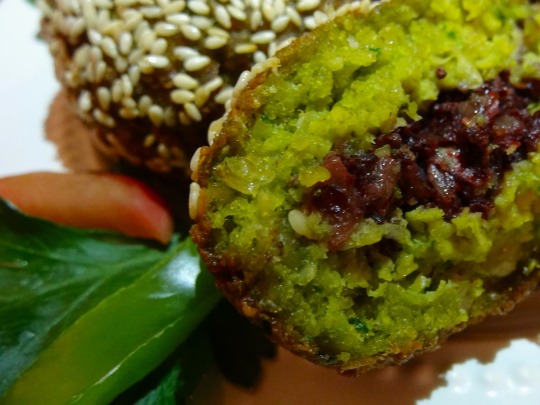
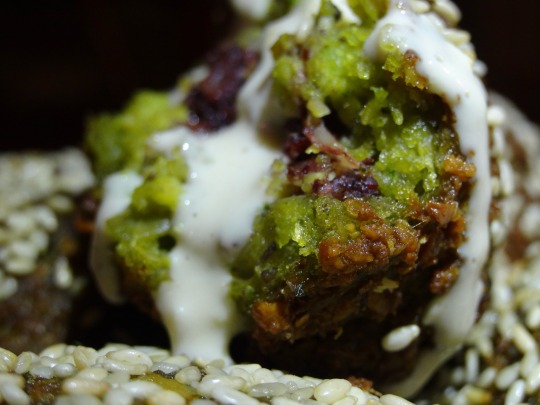
#Palestine#Israel#vegetarian recipes#Palestinian#falafel#chickpeas#sumac#onions#garlic#parsley#cilantro#dill seeds#sesame seeds#tahina#yoghurt#long post /
802 notes
·
View notes
Text
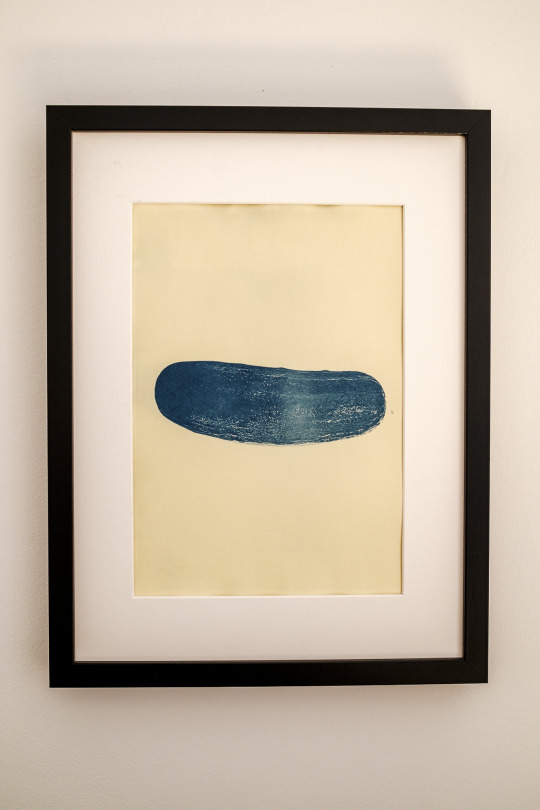

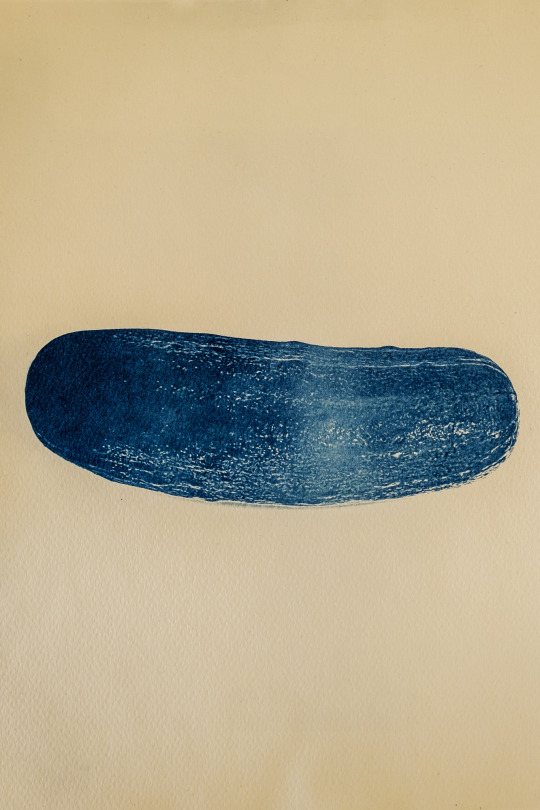

I wanted to celebrate with these two prints that I made, a long history that jewish people, garlic and pickles have. You can purchase these print via my Etsy shop.
And here's the history:
Already in ancient times, garlic was a central part of celebrating Shabbat. The Talmud devotes several passages to talking about garlic, explaining that it is a key part of Shabbat meals. “With what does one delight in the day of Shabbat?” the Talmud asks, recording an answer provided by Rav Yehuda, son of Rav Shmuel bar Sheilat, who recalled the words of his teacher Rav: “With a dish of beetroot, and a large fish, and heads of garlic” (TalmudShabbat 11b). Elsewhere, the Talmud refers to Jews who celebrate Shabbat as “garlic eaters,” so closely identified was Shabbat dinner and lunch with this fragrant vegetable. (Talmud Nedarim 31a)
Even later on, in the medieval times, the conncetion between jews and garlic was quite close. In fact, it helped the community to survive! In Istanbul, when Jews avoided the plague during a terrible epidemic, it was said that the virus did not penetrate the Jewish area because of the smell of garlic. Jews hung bulbs of garlic outside their doors to ward off the plague as a talisman and sign of good luck. The food historian Gil Marks adds: “Historically, the addition of garlic was among the typical Jewish touches that enhanced local dishes. In many cultures, the presence of garlic marked a dish as Jewish.”
In Germany, in the towns of Speyer, Worms and Mainz were home to large, vibrant Jewish communities. A popular acronym for these areas took the first letter from each town – S, W (which is written with a double “U” sound in Hebrew) and M – echoed the Hebrew word for garlic, shoom. The area was known as Kehillas Shoom (or SchUM) – the community of “Shum”, or garlic in Hebrew.
So identified were German Jews with garlic that some anti-Semitic images persist from the Middle Ages and Renaissance, depicting Jews holding or posing with bulbs of garlic.

But jews and pickles go back for a long time too. Eastern European Jews brought their pickle-making traditions to America in the late 19th and early 20th centuries and made it famous there. Pickled cucumbers were an important part of their diet due to the need for preserving food in harsh climates in Eastern Europe, where was a common practice to collect and preserve pickles in order to survive winter. Everything could be pickled, from lemons to carrots, with varying degrees of culinary success.
Some took the cucumber, a cheap, accessible vegetable, preserved it in the spring to make them last through the winter and feasted on it throughout the year. Some of those people were Jews and thus the Jewish love affair with pickling began, as a way of keeping vegetables hygienic and healthy.
Fermantation itself as has a biblical orgin in various places. Perhaps the best-known early reference to fermented food is the Passover story in Exodus (12:39): When the Jews were "thrust out of Egypt, and could not tarry," their dough could not rise (through fermentation). We know this unleavened bread as matzo. But when they left Egypt, after some time, their longing for these goods came up: "We remember the fish which we were wont to eat in Egypt for nought; the cucumbers, and the melons, and the leeks, and the onions, and the garlic” It’s likely that the cucumbers mentioned by our Jewish forebears were pickled in some way. Ancient cucumbers tasted extremely bitter and the ancient Egyptians “cooked” their cucumbers by lightly fermenting them. The resulting pickled vegetables were slightly alcoholic, and were seemingly eaten for their mind-altering properties.
#jewish#jumblr#print#pickle#garlic#organic#food#fermentation#pickling#tradition#eastern europe#delicacy#deli#garlics#onions#cucumber#pickles#cyanotype#judaism#jewish history#food history#etsy#sale#art#cyanotype print#sunprint#original#decoration
166 notes
·
View notes
Text

Alliums
Linocut
Alliums! I love alliums!
I learned about quilts and quilt designs recently, and this design is inspired by that (and alliums). :)
1K notes
·
View notes
Text
‘eatin chocolate all day, surely this won’t upset my stomach in any way…
#spoiler alert i will be dying later but it’s WORTH IT!!!!!#the pure irony in that my favorite foods kill me#garlic onions and chocolate :(((#talk
134 notes
·
View notes
Text
a fun thing you can do when you're a grownup is buy a bunch of ingredients and make 6 litres of spaghetti sauce in a big pot and divide it up into a bunch of containers and put it in the freezer!
#food#I used 4 cans of tomatoes and 2 small zucchini and a pound and a half of ground beef#and 3 bell peppers and a bulb and a half of garlic and 2 thingies of mushrooms and I think 5 onions?#I'm spaghetti sauce rich! I can have easy spaghetti occasionally for many weeks to come!#I was going to make it yesterday when I bought most of the ingredients#but then I realized the 2 cans of tomato I had in the cupboard were probably not enough#highly recommend making a lot of a freezable thing and freezing it! future me is going to be glad to have so much sauce!#cooking#I wish I had a cheese grater. I must get one
532 notes
·
View notes
Text

Name: Grass
Debut: Super Mario Bros. 2
Hey guys! Did you know that Super Mario Bros. 2 was originally a reskin of a game called Puck-Man, but they changed the name so people wouldn't vandalize the cabinets and make it say Q*bert? Anyway here's Grass
I hope you like Grass. I hope there are some ruminants among our readers who get so hyped upon seeing a depiction of grass. But I don't care about the grass itself. I care about what's underneath... Funny Vegetables! The kind to throw at a Shy Guy or a Tweeter! Let's look at each Vegetable's NES and SNES design, and discuss them!

Turnip is the most iconic of the These Vegetables. Not the most iconic vegetable, but the most iconic Mario Vegetable. It's the main one that gets referenced, reappears as of Captain Toad: Treasure Tracker, and is even part of Peach's Smash moveset! Where they make even more variants that I don't feel like getting into here for the sake of post length. I quite like Turnip's classic brow(s), though they would be removed, along with the mouth, in future iterations. Such is brand identity.
In Minion Quest and Bowser Jr.'s Journey, Shy Guys' main method of attack is throwing turnips! I like that a lot. It references their debut and is just a very whimsical thing!

I would expect to pull up a turnip from the ground, but lookie here! A couple of Fruits. It's unclear if these are pumpkins or bell peppers, and they come in red and green, which are both options for both fruits! Neither of the options, however, grow underground, so maybe they were playing hide-and-seek. It would explain their surprised expressions! They thought that was such a good hiding place, and it was! Also, I am not averse to calling these fruits vegetables. "Vegetable" is just a culinary term, referring to a part of a plant that we eat! Every fruit is a vegetable. Blueberry pie is a Vegetable Dessert. Words are fun!

Beet is the happiest vegetable we've seen so far! But oddly thin. I hope it's not malnourished! If it is, it's still optimistic, and that's commendable. Maybe it's happy because it was voted Most Likely To Be Pickled in the vegetable high school year book! (Cucumber was homeschooled)

Beet was so thin, and now Parsnip is so wide! It feels like their colors should have been swapped, maybe. But a Parsnip Muncher would delight in having so much more to munch here! A parsnip you could eat like an apple! I am not sure what Parsnip is thinking, with its very neutral expression. If I had a nickel for every time I couldn't tell what a parsnip was thinking, I'd be rich!

Tomato is my favorite! It's SO happy! The biggest smile around! So happy to be a tomato! Maybe it's thinking about how everyone loves tomatoes and how versatile they are! Maybe it's happy because THIS fruit is never buried underground- this and the following vegetable only appear from the Dream Machine during the final boss battle against Wart. I guess Wart doesn't like tomatoes. So not everyone does... but phooey to him, because he's a Bad Guy! We goody two shoeses love Tomato!

Finally, last but not least, is a quite interesting vegetable! This one is a bit mysterious, a bit ambiguous. Ambiguous whether it's an onion or a garlic. Ambiguous whether it's wearing thick glasses, or it has wide, pupilless eyes. I'm going to claim this vegetable as non-binary, and also establish "onion/garlic" as a binary. And then all humans will become non-binary...! What I can be sure of is that this allium looks like a nerd. "According to my calculations, my presence serves to enhance the flavor of any culinary delight!" Ok, dork! I love you.
So these have been Vegetables! I hope you liked them! And I also hope you like them in real life, That's Health! This post was funded and approved by the FDA. Can I say that? What are they going to do about it? Sue me? Kill me? Hopefully neither!
#grass#vegetable#turnip#pumpkin#bell pepper#beet#parsnip#tomato#garlic#onion#super mario bros 2#doki doki panic#mario#mario items#mario entities#mario allies#?#they are helpful little things#mod chikako
117 notes
·
View notes
Text

Skillet fried potatoes and onions with sherry aioli
#potatoes#potato#fried potatoes#aioli#food#side dish#crispy potatoes#breakfast#dinner#onions#garlic#fried food#easy recipes#tasty#foodporn#delicious#cooking#food photography#foodgasm#recipe
1K notes
·
View notes
Text
"Remember to check with a teacher or one of the gardeners before eating what you pick from the gardens." calls out teacher Max.
The youngling centre was on a field trip visiting the ships indoor public garden that grows both flowers and vegetables from a variety of different planets. Younglings took joy in sharing and showing their friends vegetables and plants from their own respective planet. Even the teachers, Max and Kim, were happy to tell them about earth's plants.
"Wow, what's that Emira?"
"It's a glass flower!" she chirps holding up a beautiful flower with the petals and stem translucent. "They're my favorite flower!"
"So pretty! Can you...eat it!" the human grins.
"No!" the avian giggles. "You can't eat it! But my Maemae says you can use the roots for tea that helps tummy aches."
"I'll have to remember that." he nods, wearing an utmost serious and thoughtful face. The nearby gardeners chuckle.
"You should!"
"I shall-!"
"TEACHER MAAAX!!"
All heads whip to the south of the garden. At the very end of it is Ezshi screaming and waving their little tail and arms frantically. Beside them is Pollix, Zyz, and Tarlak huddling around a Kim kneeling on the ground grabbing her throat.
"Mr Max you stay h-" the gardeners watched as the human sprinted as fast he could to the other side of the gardens. Seconds later the younglings followed suit with Emira leading them, flapping her little wings as fast as she can.
"KIM! KIM WHAT'S WRONG?!" he skids to a stop beside her grabbing her shoulders to examine her.
The human shakes her head, face red, opens her mouth to speak only to go into a coughing fit. Her right hand at her throat, her left pounding her chest.
"What happened?? Did you eat something?? Kids what did she eat?!" later he'll apologize for shouting but right now he can't help it. Right now he's going through every lesson he's had about what to do when one eats something harmful/unknown to their species.
"I-I don't know! Tarlak gave it to her!" Zyz cries, tears streaming down their little snout.
"Tarlak, buddy, what did you give her??" the little Simia's lips quiver as he stares at the still hacking Kim.
"Tarlak, focus. What did you give her? What planet plot was it from?" Max grabs his shoulders, making him look solely at him and not Kim.
"...earth...it-it was from earth. This." he hands over a half eaten white plant bulb.
"...Kim's fine kids." he sighs flopping over onto the dirt. The adrenaline immediately leaving his body.
"What! What is it?!" they all cry.
"It's garlic."
For a moment there is silence save for some sighs of relief from the human children. And then.
"GET THE RED BAG!"
"CALL THE GARDENERS!"
"SHE'S GONNA DIEEE!"
All the younglings scream and wail. Most like Emira, however, simply cling to the human silently crying.
"...what?! Kids! She's not dying."
" 'm not...dying." Kim rasps, finally done coughing.
"Garlic is poison! It's how my Maemae's uncle died!" Emira wails.
"I heard one garlic clove can kill a hundred rextalians!" Ezshi frets.
"What are you talking abo...oooh. Thiosulfate."
"Thio-whatnow?" Kim coughs, spitting out a piece of garlic she frees from her cheek.
"Reason why most animals can't eat garlic and onions. Including most other non-earth species."
"...Oooh! Okay learning time! Listen up kids. Humans can eat garlic! Got it? Humans can eat garlic and other foods like garlic, our body breaks it down and stuff."
"But you choked and your face turned red!"
"Because the taste is very strong. It's like lemons. Basically I took a giant bite out of a lemon."
"...Ooooh!" cries out the younglings now understanding that their teacher is not dying.
"Wait why did you take a giant bite out of garlic?" laughs Max.
"I didn't know if was garlic or an onion and Tarlak's dad uses onions for to make a bug repellent...don't judge me I've never seen garlic in that shape before!"
"Why didn't you ask a gardener?"
"They're all the way on the other side of the field! Just-shush!"
"I'm never letting you live this down. Now help me stop the human kids from doing some kind of garlic challenge. I see Anthony and Piper eyeing them."
#So we have a vegetable garden and the kids were picking veggies#and I know nothing can hurt them and no one has any allergies but just in case of like rotting or bugs i tell them to show me first#before they eat it. one of them hands me a white bulb asking what it is. can't tell if its onion or garlic so i cut it and still can't tell#its just one big piece so i bite into it#raw garlic assaults my tongue like nobodies business#go into a coughing fit spat it out and chugged water#kids thought i was dying#then a kid throw the rest of it in his mouth while im still chugging water and he goes through the same thing#humans are space orcs#humans are space oddities#humans in space#the adventures of kim and max running a space child centre
139 notes
·
View notes
Text




#non archive#red#green#brown#misc#this moodboard is so wong kar wai esque#i have been in a cooking kick lately! for breakfast i made some honey gochujang salmon w egg and green onion and rice and it was sooo yummy#gna make oyakodon tonight for roomies and me!#last night i made a thai peanut noodle dish that was a hit too#the perfect amount of spice...#and then friday night i made a creamy chicken & rice dish with carrots garlic parsley onions etc etc#if yall have any recs for youtubers/pinterest boards to follow pls lmk!#i might do some more archive mbs today but it is quite a jam packed day so we shall see
162 notes
·
View notes
Text

Beef Barley Soup
470 notes
·
View notes
Text
Loaded Baked Potato Soup — 🥔
86 notes
·
View notes